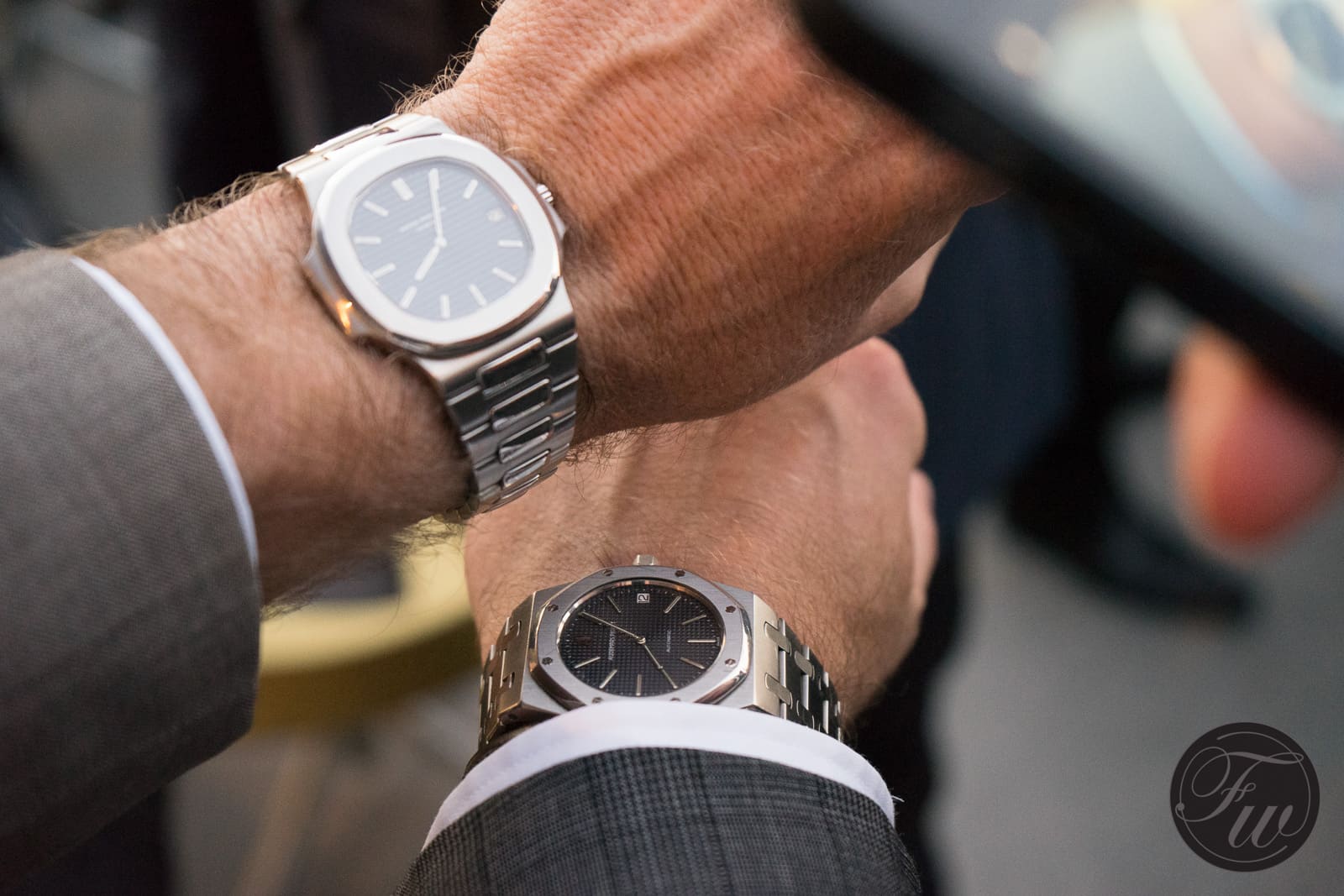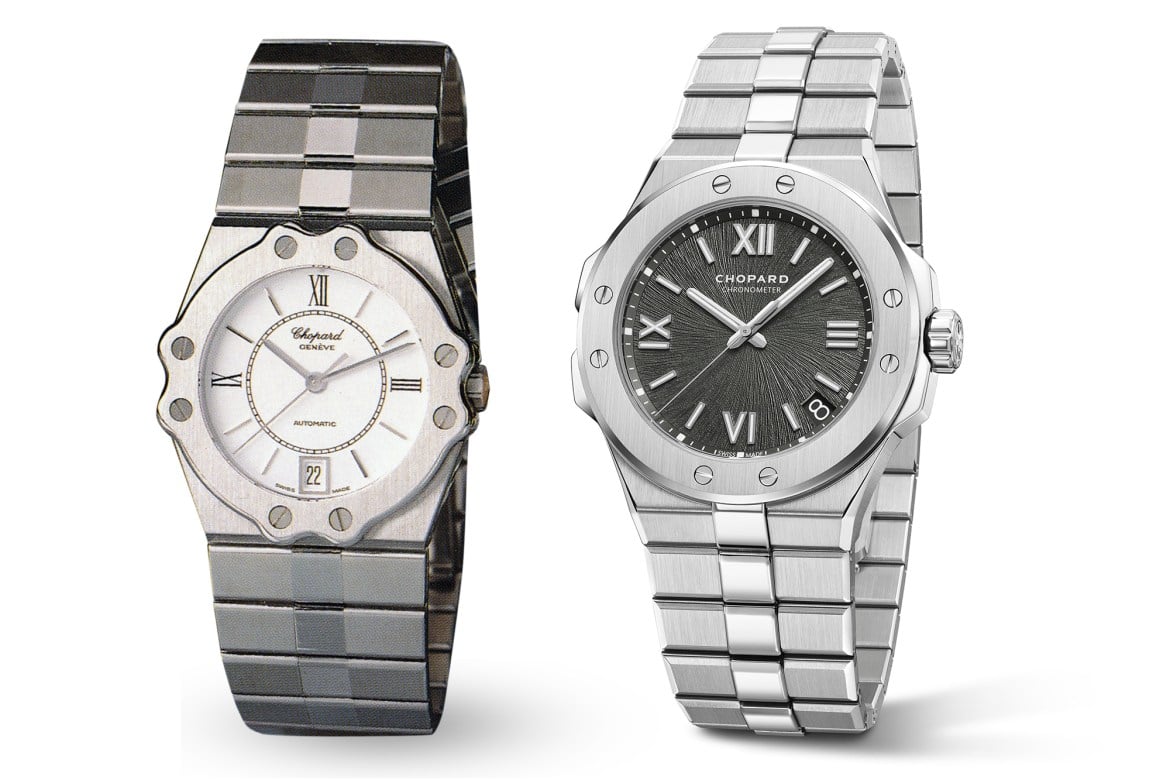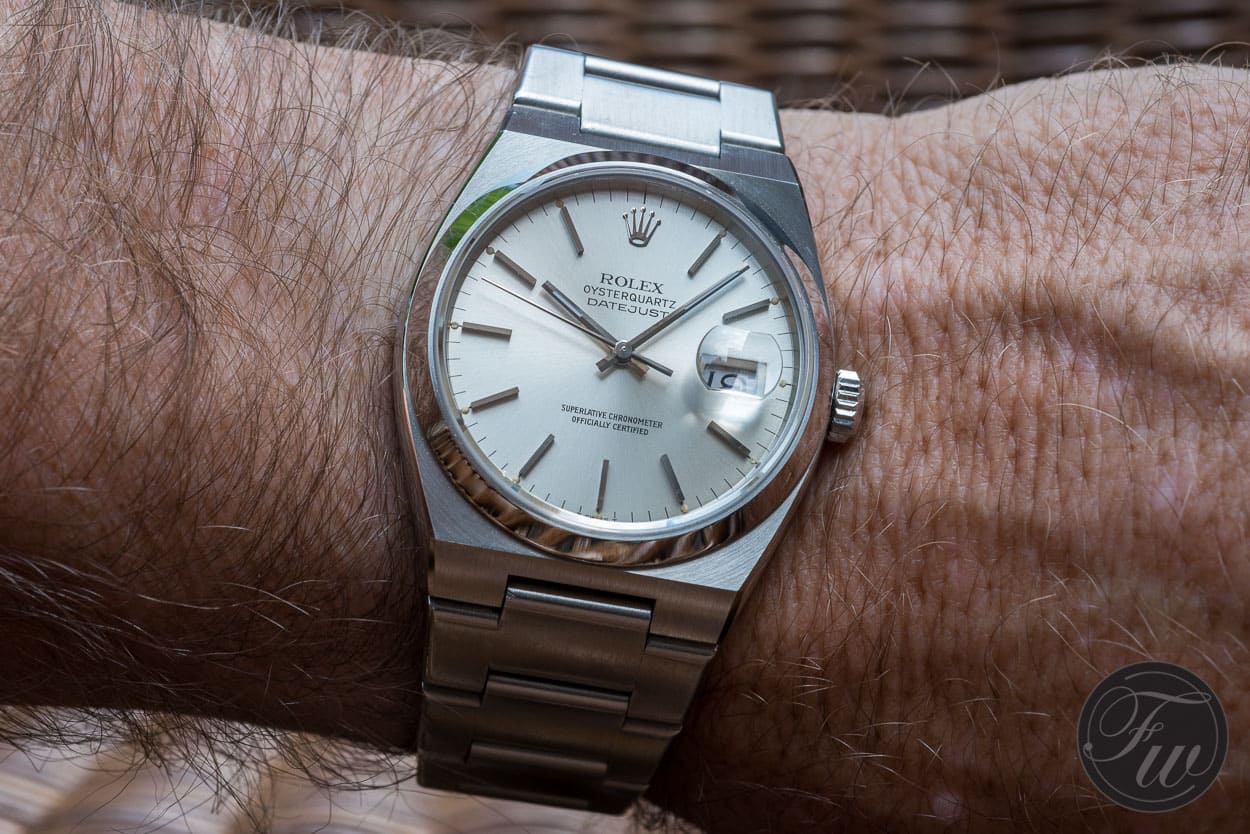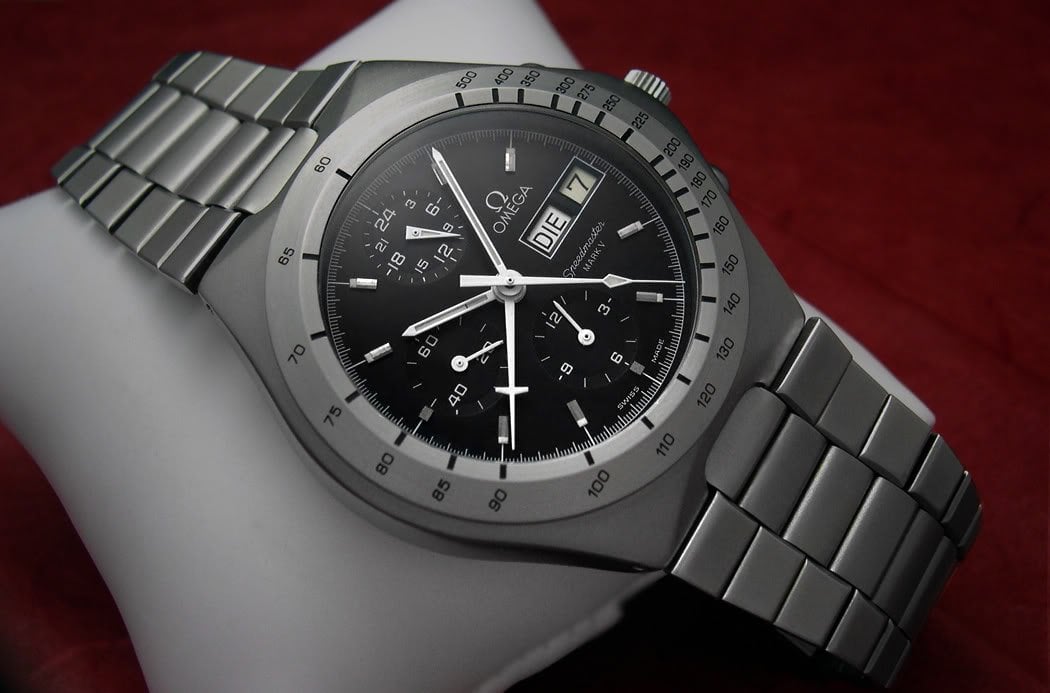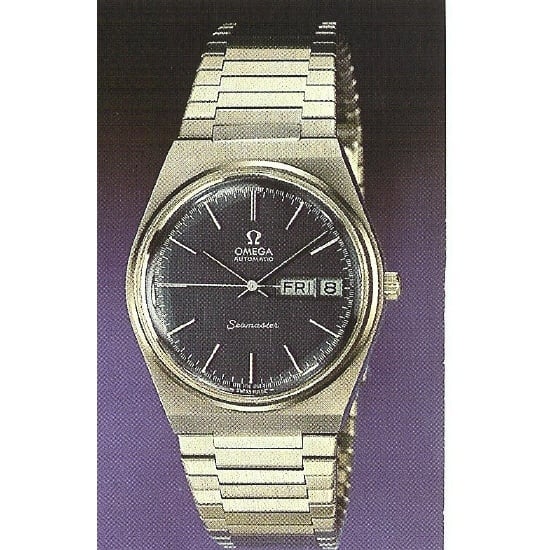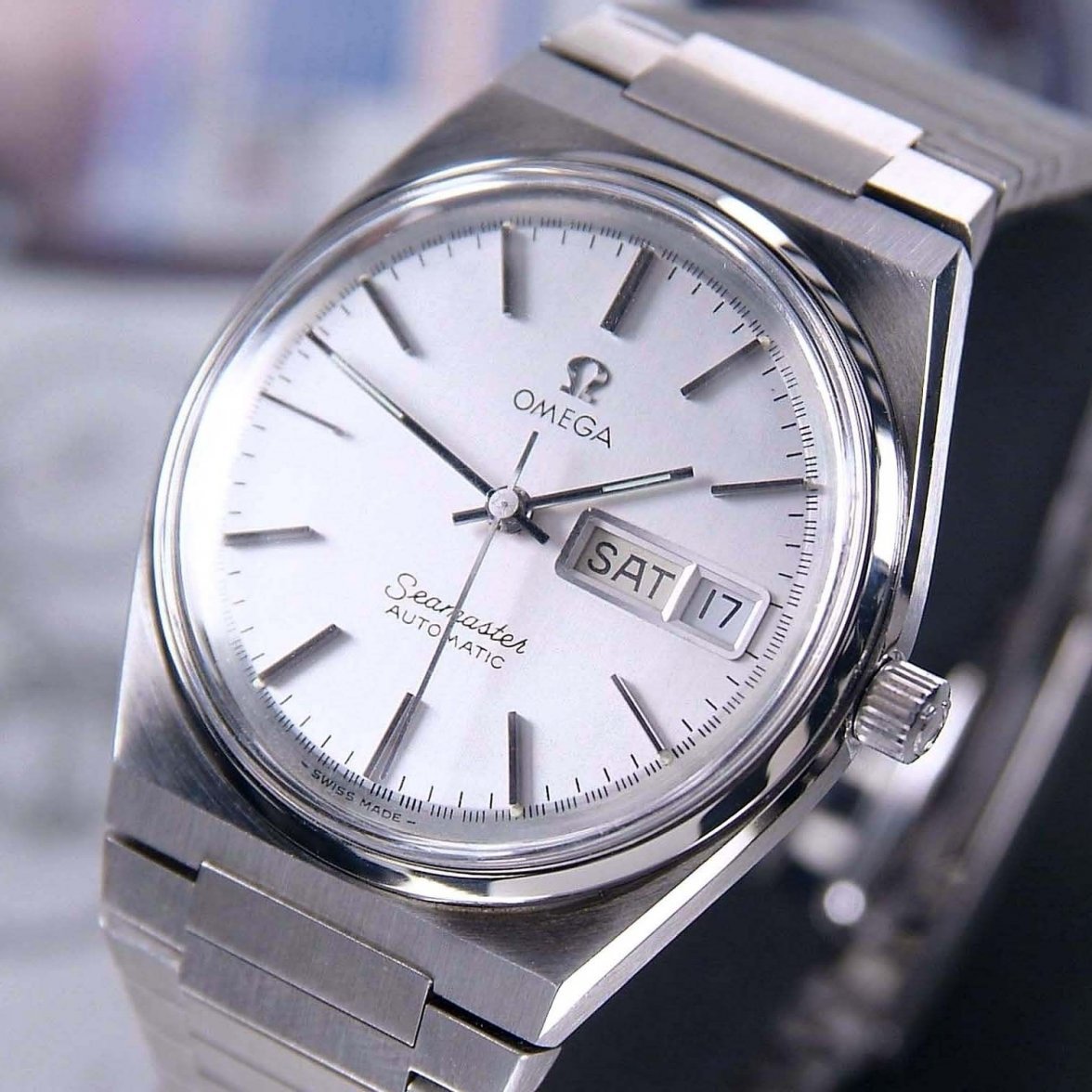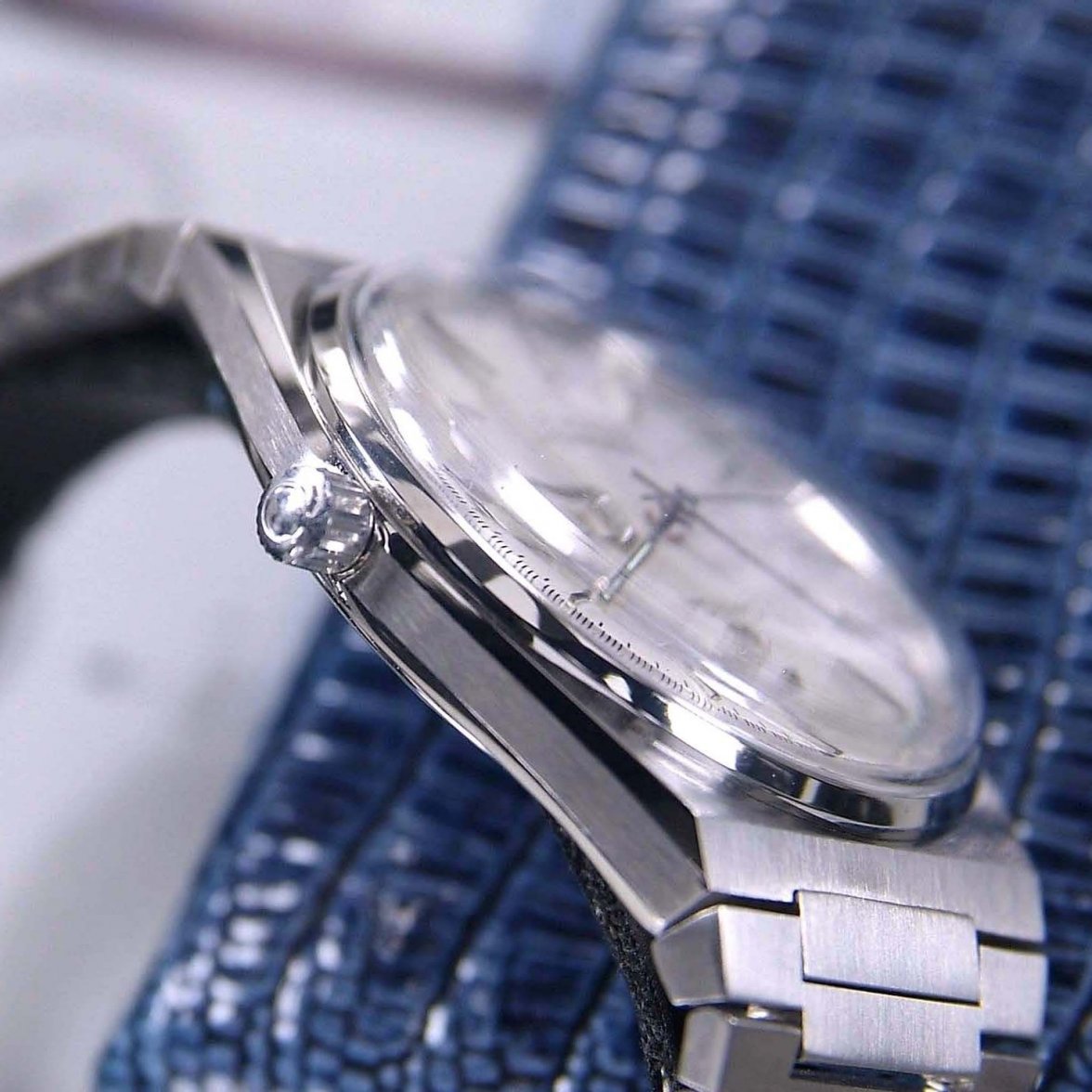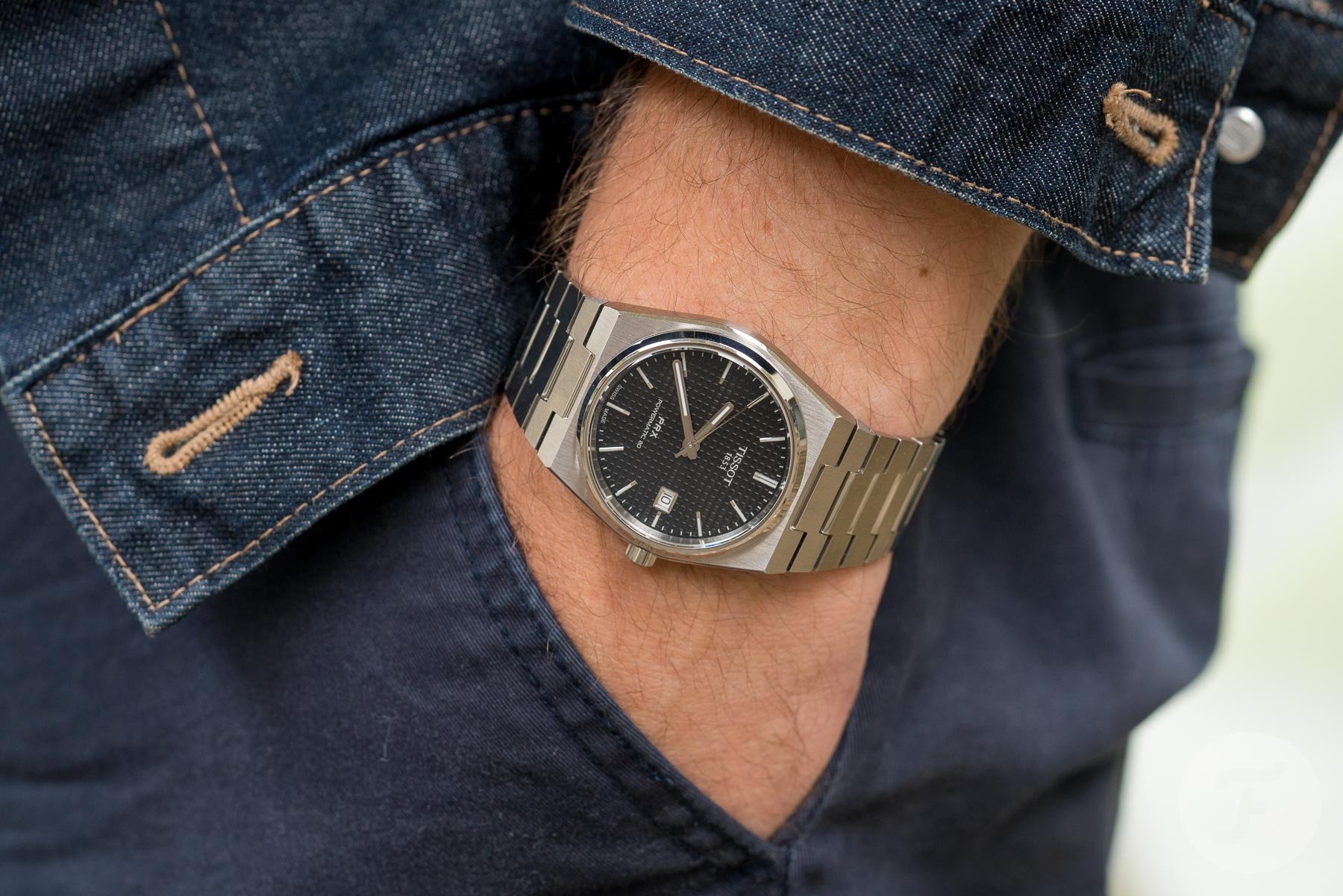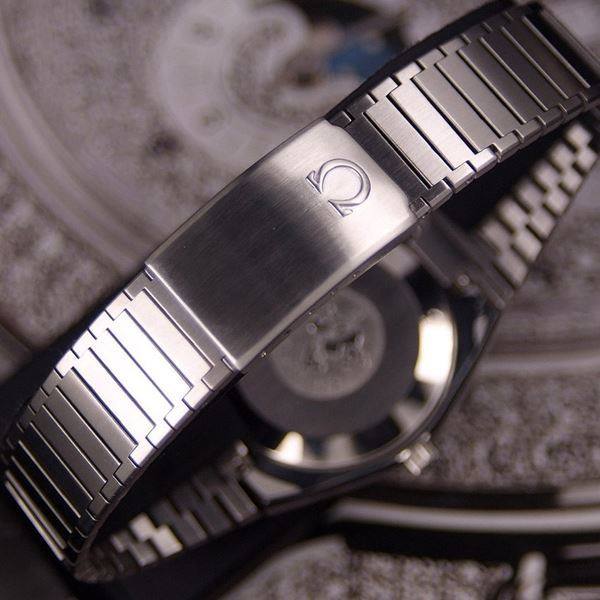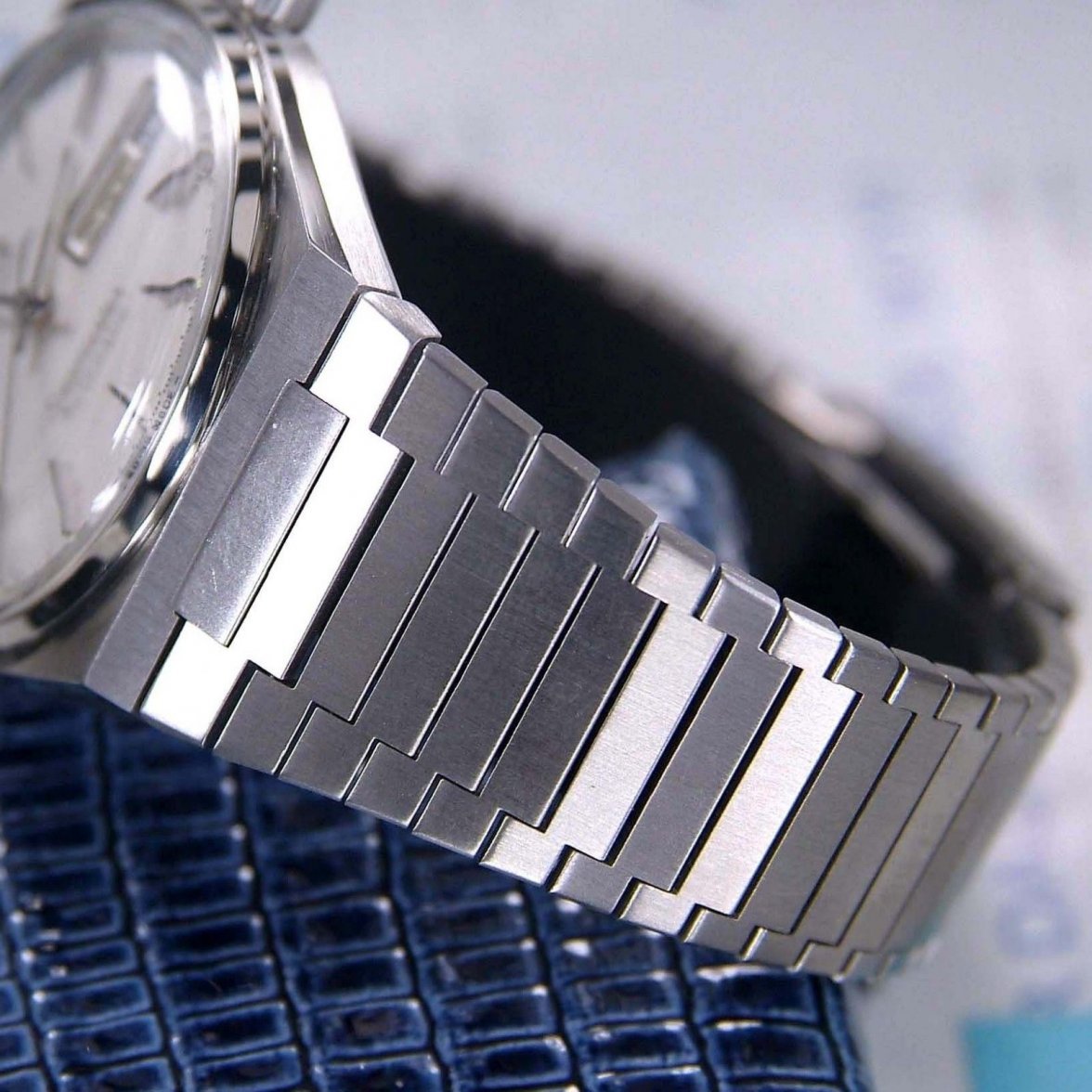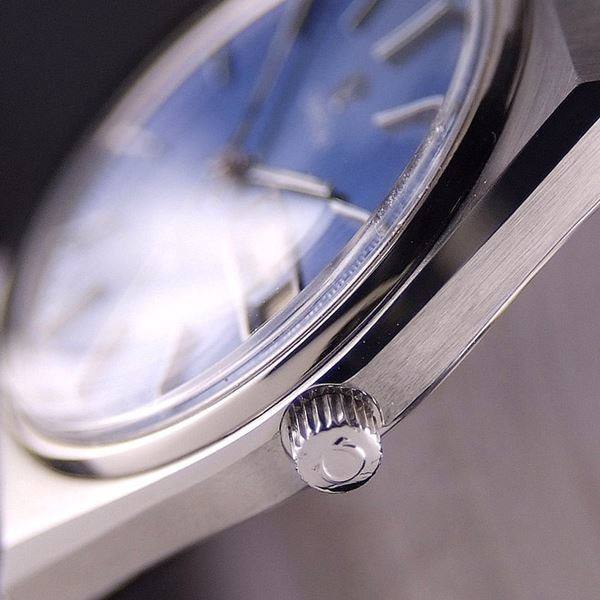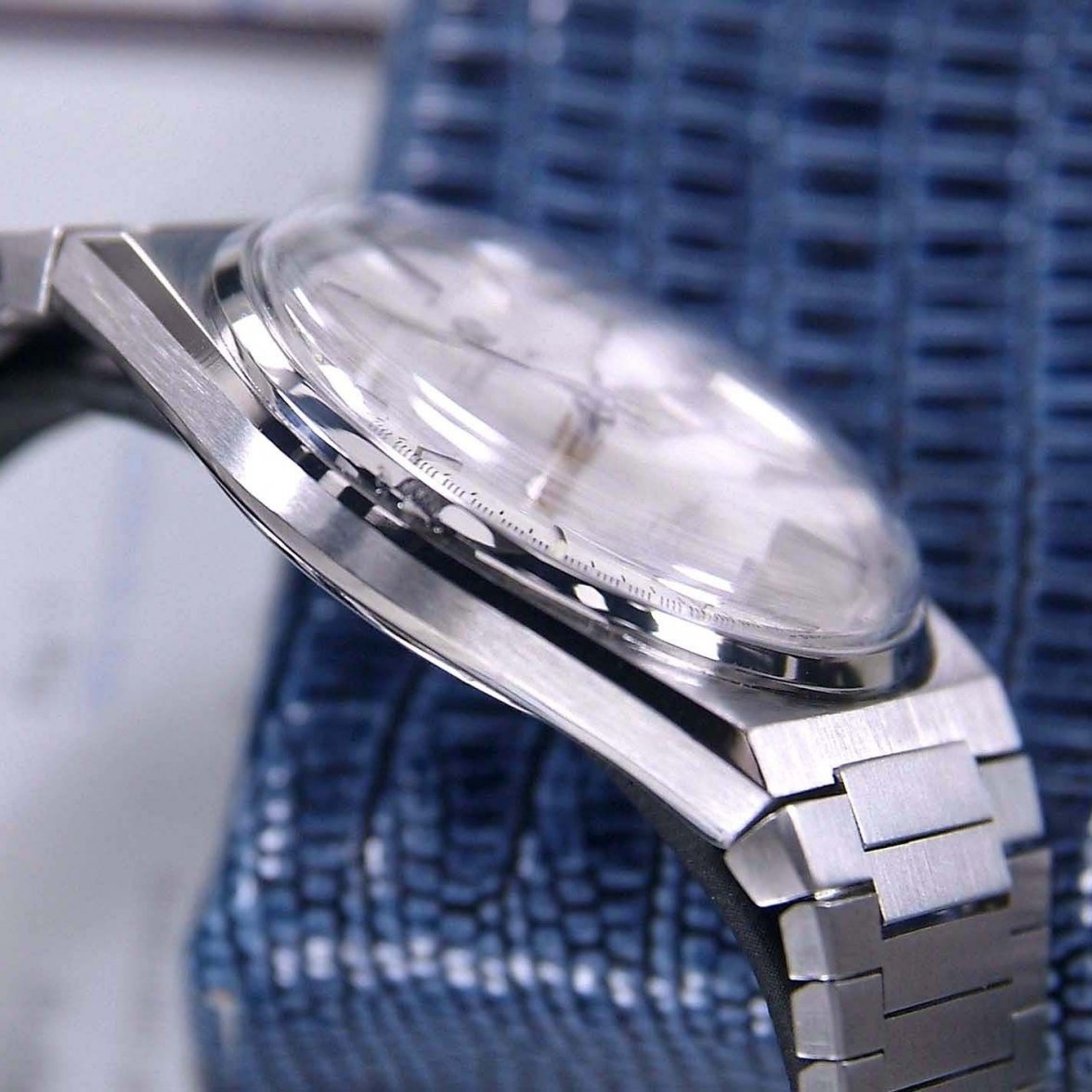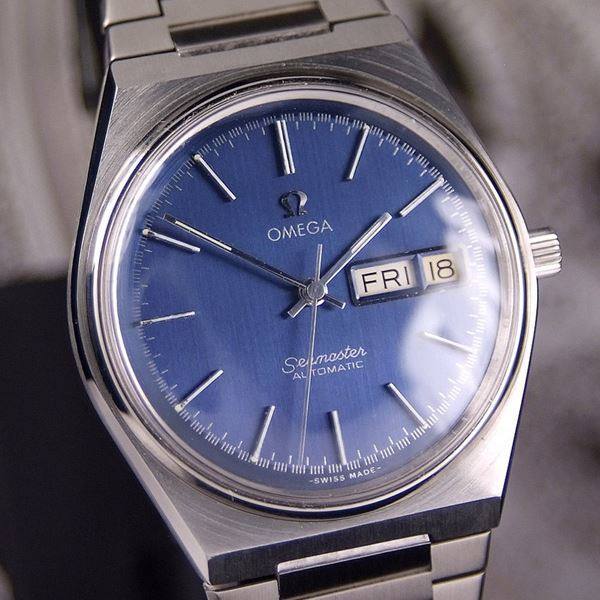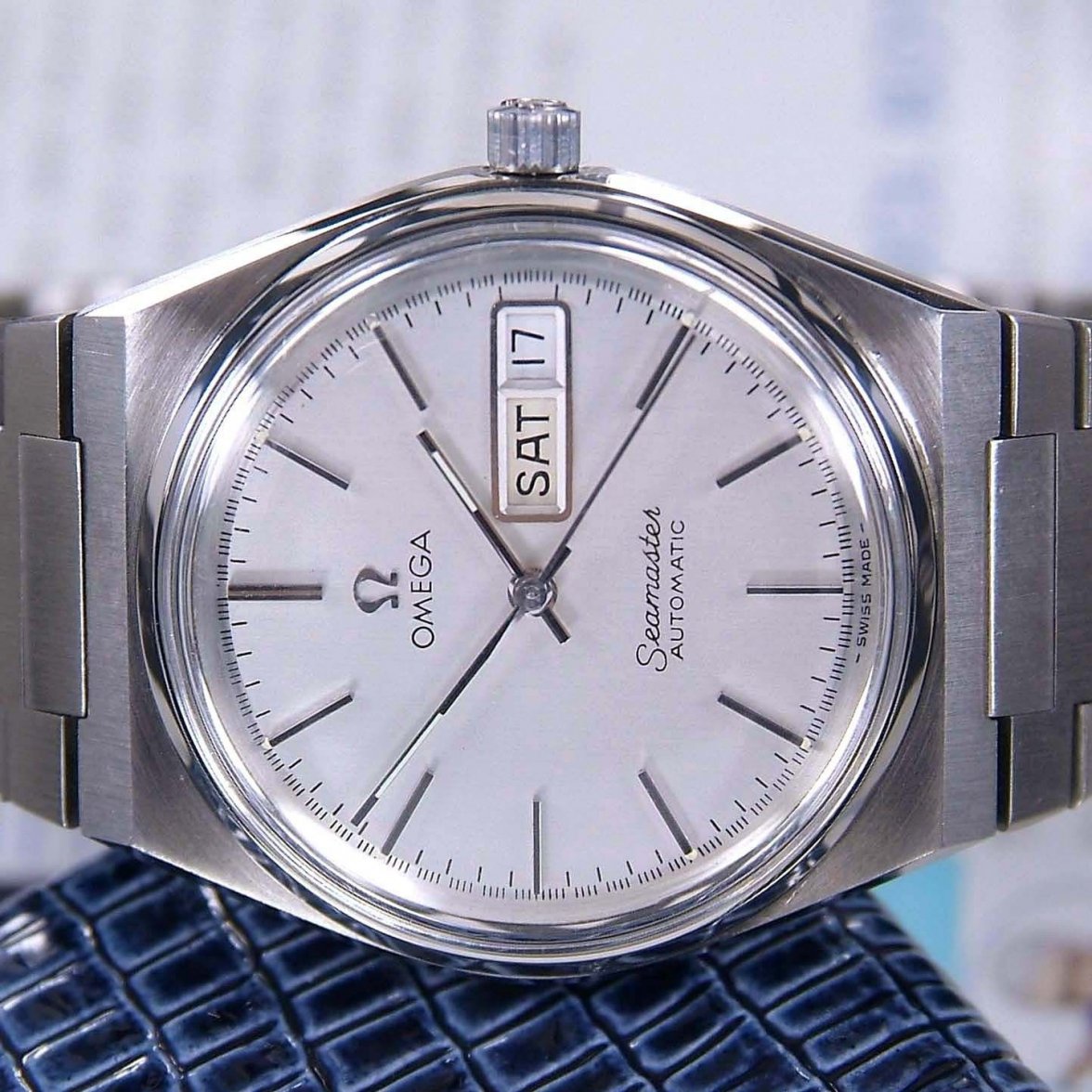Dear Omega, Bring Back The Seamaster Ref. ST 366.0847
In recent years, we have seen a massive resurgence in appreciation for integrated-bracelet sports watches. And rightfully so, since the genre arguably saved the Swiss watch industry in the ’70s. Omega’s current catalog does feature the Constellation, but this is hardly a sporty-looking range. A quick dive into the brand’s history reveals an absolute gem, though. Reference ST 366.0847 has everything to become an absolutely huge hit in today’s market.
So Omega, please bring back your beautiful historic reference ST 366.0847 — the day-date Seamaster with an integrated bracelet. I promise you will sell a ton of them!
A recap on the integrated bracelet
You probably know this all by heart, so let me keep the history lesson short and sweet. Audemars Piguet formulated an answer to the influx of cheap and accurate quartz watches in 1972. The brand introduced the Gérald Genta-designed Royal Oak, a steel sports watch with an integrated bracelet. Its price was so exotic that it opened up an entirely new market — luxury sports watches. It proved to be a lifeline for the limping Swiss watch industry. There would be a place for mechanical luxury and craftsmanship in a quartz-dominated future after all.
Patek Philippe and Vacheron Constantin followed in 1976 and 1977, respectively, with the Nautilus and ref. 222. Many people think these were the three “originals”. Note, however, that Rolex introduced the “Texan” ref. 5100 in 1972. Granted, this was a quartz watch, but it was still a luxury integrated-bracelet design. The Oysterquartz followed in 1977. Piaget introduced the Polo in 1979, and Chopard launched the St. Moritz in 1980. Zenith also had both the Surf and Defy ranges in the ’70s. And there were many, many more. This was truly the style of the decade.
I always get a bit annoyed when any integrated-bracelet design gets labeled a Royal Oak knockoff. Sure, the Royal Oak was the OG of the genre, but does that mean no other iteration of the concept should be allowed after that? Should no rotating-bezel watch have been launched after the Longines Weems? No more rectangular cases after the Tank? Come on! No more of that sourness, please. Variety is the spice of life!
Omega and integrated bracelets
Okay, back to Omega. The brand fully boarded the integrated-bracelet train in the ’70s. A multitude of models in several different lines was executed in this style. You will find Constellation, Geneve, De Ville, and Seamaster variations on the theme. Even the Speedmaster got the treatment in the “Mark” series. The Seamaster that I am hoping to see re-released dates back to 1975. Yes, that predates most of the integrated-bracelet heavy hitters.
Omega combined the style with funky cases, too. There were TV cases and weird oval cases, all fitted with integrated bracelets. The brand really went to town on quirky designs. Some were a bit far-fetched, while others were absolutely inspired.
Why ref. ST 366.0847?
I felt that I should look for my ideal candidate for resurrection in the Seamaster line. We are talking sports watches, after all. I could have opted for the TV-case ref. 166.0213, but I feel that it would be a bit too much of a ’70s throwback. The ref. ST 366.0847 is a more timeless design. Is it a little less outspoken? Sure. But it is more easily capable of transcending its era.
This Seamaster is deceptively simple in design. See the way its tonneau case flows around the polished round bezel. The thin, long hands and indices. Short links for a refined look and comfortable fit of the bracelet. A small crown that neither draws attention away from the dial nor digs into the wrist. The high-res minute track, subtly implying accuracy. It is all very well balanced and thought-out.
The watch has a subtle focus to it. There really aren’t any revolutionary or eye-catching elements there. But as I describe in my ode to base models, that can be precisely why a design works. This is a thing of beauty in its simplicity. It is an archetypal integrated-bracelet sports watch.
Hold on… Am I seeing some Tissot in there?
You might argue that the Swatch Group has already brought back this model. Put it next to the Tissot PRX, and the similarities are abundant. In fact, Omega and Tissot have been under the same umbrella since 1930. No wonder, then, that resources were shared between the two brands. This was clearly visible in these 1970s integrated-bracelet models. The 1978 Tissot model that is referred to as the source for the PRX re-edition is extremely similar to our 1975 Omega ref. ST 366.0847.
Today, this might present Swatch Group with a bit of a conundrum. How would it bring back this Seamaster after the PRX? Clearly, there must be some differentiation between the two. Luckily, the PRX has been positioned as a great value proposition in the entry-level segment, allowing for a slightly more up-market alternative. And if the PRX’s success is anything to go by, there is a lot of potential here.
Modernizing the Seamaster ref. ST 366.0847
So what would I do to bring this watch to 2022 spec and differentiate it from its PRX cousin?
For starters, I would keep the general case shape and bracelet design, then add some nice beveling and contrasting finishes to showcase Omega’s prowess. The PRX bracelet is amazing in its segment, but Omega can surely lift it into premium territory. Just imagine a screwed-link construction, sharp facets, deep brushing, and high polishing. Yes, please!
Of course, we would need a modern movement. With its day-date complication, caliber 8602 makes sense. It is a very handsome caliber, so I would certainly put it on display behind a sapphire case back. This movement also allows for another change — to put the day in a curved display at the top of the dial and the date at 6 o’clock, like the Aqua Terra Day-Date. I would love to see a time-only version as well. I might even prefer it, to be honest.
I would replace the domed acrylic crystal with a sapphire alternative. I would certainly keep the dome, though. It is one of the characteristic aesthetic elements of this watch and a great way to move it far out of PRX-design territory.
Two size options for the ST 366.0847
I would love to see the re-edition fairly close to the original 35mm size. To me, a 37mm version would be sheer perfection, and I am sure a lot of our readers would agree. I also know there is a hardcore fan base of larger watches among our readers, and I do not want to ignore you. So how about this? We’ll do a 37mm and a 41mm version with no women’s and men’s nonsense. Just 37 and 41 for whoever likes them.
The integrated-bracelet style, to me, benefits from a slender case. I would encourage Omega to try and keep it as thin as possible. Under 12mm would be a requirement for me. A time-only version under 10mm would be amazing.
Dials and hands
Where Tissot fitted the PRX with a broader handset, I would keep the slender hands of the original Seamaster ref. ST 366.0847. I would certainly also keep the intricate minute track and the applied Omega logo. Black, silver, and blue sunburst dial options seem almost obligatory. There are plenty of beautiful colors in Omega’s catalog for this watch. The brand’s sunburst blue, gray, and brown dials would work perfectly.
However, I would be particularly interested in seeing Omega’s horizontally brushed ruthenium dial on display here. It would add strong visual interest and a modern touch to the design.
Another cool option would be the silk-embossed texture found on some Constellations. This finish reminds me of old “linen” dials. I reckon it would contrast the smooth exterior of the Seamaster ref. ST 366.0847 beautifully.
Closing thoughts
If Omega were to release the above in the price bracket of similarly specced Seamaster Aqua Terra and Constellation watches — around €6.5K — I would certainly be a customer. I have a gut feeling that I would not be alone.
Furthermore, I think there is enough potential here to result in a new sub-line of Seamasters altogether, next to the Aqua Terra, Planet Ocean, Diver 300M, and Heritage Models. May I humbly suggest the Omega Seamaster Integrale? Solid yellow gold and Sedna Gold editions would most certainly look stunning as well.
Dear Omega, can we please have this? Can we? Can we?

